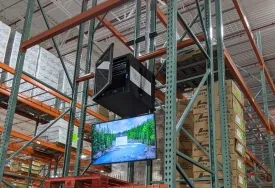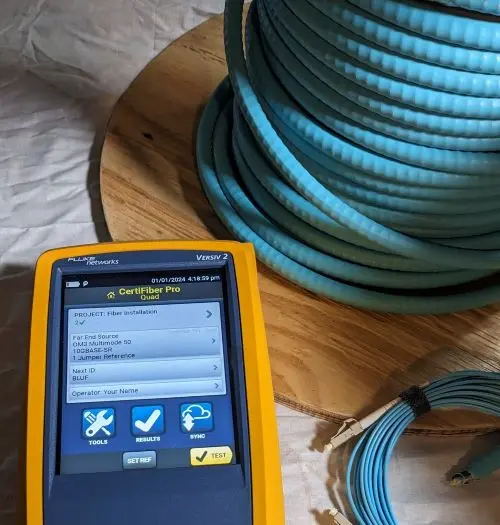Michigan, USA
Low voltage network planning

Low voltage network planning is a critical aspect of modern electrical infrastructure, essential for ensuring efficient power distribution in residential and commercial areas. This process involves the careful design and management of networks that operate at voltages typically below 1,000 volts. A well-planned low voltage network ensures that electricity is delivered safely and reliably to end-users, minimizing the risks of outages and optimizing energy use. With the increasing demand for electricity driven by the proliferation of electronic devices and the integration of renewable energy sources, low voltage network planning has become even more crucial in maintaining the stability and resilience of power systems.
Effective low voltage network planning involves several key components, including load forecasting, network design, and the integration of smart technologies. Load forecasting helps planners anticipate future electrical demand, allowing for the design of networks that can handle peak loads without compromising efficiency. Network design entails selecting the appropriate types of cables, transformers, and other equipment to ensure optimal performance and safety. Additionally, the incorporation of smart grid technologies, such as advanced metering infrastructure and automated control systems, enhances the flexibility and responsiveness of low voltage networks. These technologies enable real-time monitoring and management, allowing utilities to quickly address issues and adapt to changing demand patterns.
Furthermore, low voltage network planning is increasingly influenced by sustainability considerations and regulatory requirements. Planners must now account for the integration of renewable energy sources, such as solar and wind, which require new approaches to network design and management. The shift towards more decentralized energy systems also poses challenges and opportunities for low voltage networks, necessitating innovative solutions to accommodate distributed generation and storage. Moreover, regulatory frameworks often mandate specific standards and practices to ensure safety, efficiency, and environmental compliance. By incorporating these factors into their planning processes, utilities can create robust low voltage networks that not only meet current demands but are also adaptable to future technological advancements and sustainability goals.
We bring a high level of expertise to every project, backed by years of industry experience. Please visit our work to see detailed examples of our completed projects and the high-quality standards we uphold.

Our team stays up-to-date with the latest network standards and installation practices, ensuring that your systems are cutting-edge and compliant. This means we use the most current technologies and methods to deliver reliable, efficient, and future-proof networking solutions.

We use only the highest quality copper, fiber, and AV products, ensuring superior performance and durability in all our installations. Each product is certified to meet or exceed manufacturers' specifications, guaranteeing optimal reliability and efficiency for your network.

Our data cabling projects are performed professionally, reliably, and with full accountability, giving you peace of mind and confidence in our services.
Upgraded a global financial services company’s WAN to an AT&T rate adjustable 100Mbps interstate-rated switched Ethernet circuit. Install flexible conduit from the parking garage telco room to the building interior. Pull 300’ CAT 5E CMP cable from AT&T demarc using the building’s existing conduit over the lobby and up to the tenant’s 3rd floor MDF...
Complete build-out of the cable plant for a national fine dining restaurant. Install flame-retardant telecom backboards in the electrical room. Install an 11U wall-mount open swing rack on the backboard. Ground rack to building UFER with #6 AWG. Core drill into the masonry block wall and install 1-¼ EMT sleeves. Build overhead cable support system in kitchen and dining...
Achieve higher bandwidth and faster data transfer rates for an investment bank branch’s Main Distribution Frame (MDF) to Immediate Distribution Frame (IDF) backbone. Pull (1) 6-strand armored fiber, 50 MIC MM OM4 cable and (4) CAT 6 CMP cables from 1st floor MDF to 1st floor IDF using existing cable pathways. Ground armored fiber to building UFER. Terminate, certify, and label all...
Complete network build-out of the appliances & kitchen cabinets department for a national home improvement retailer. Label existing data and voice cabling that connects to existing store terminals, printers, and phones. Reroute existing cabling to a temporary location. Move store terminals, printers, and phones to...

Michigan, a dynamic and diverse state located in the Great Lakes region of the United States, is renowned for its striking natural beauty, vibrant culture, and robust economy. With a population of approximately 10 million residents, Michigan is the 10th most populous state in the nation, offering a blend of urban excitement and rural tranquility.
One of Michigan's most distinctive features is its unique geography, being the only state split into two large peninsulas – the Upper and Lower Peninsulas, separated by the majestic Straits of Mackinac. This geographical division contributes to Michigan's extensive 3,288 miles of freshwater coastline, the longest of any political subdivision in the world, making it a haven for water enthusiasts and nature lovers. The state's abundant natural resources, including its vast forests and numerous inland lakes, support a thriving outdoor recreational industry.
Michigan's cultural landscape is equally compelling, with a rich history deeply rooted in Native American heritage, European settlement, and the automotive revolution. The city of Detroit, known as the birthplace of the American auto industry, is home to the "Big Three" automakers: General Motors, Ford, and Stellantis North America. This legacy has earned Michigan the nickname "The Automotive State," which continues to be an economic powerhouse and innovation hub with a growing focus on advanced manufacturing and technology.
Detroit also boasts a vibrant arts scene, famous for its contributions to music, particularly Motown and techno. Visitors can explore landmarks such as the Detroit Institute of Arts, which houses one of the most significant art collections in the country, and the Motown Museum, offering a nostalgic journey through the storied history of Hitsville U.S.A.
Ann Arbor, another key city, is home to the University of Michigan, a prestigious institution recognized for its research contributions and academic excellence. The city thrives on a blend of youthful energy and cultural diversity, offering numerous festivals, theaters, and galleries that enrich the community.
Michigan's economy is bolstered by a diverse range of industries beyond automotive, including agriculture, manufacturing, information technology, and tourism. The state's fertile farmland produces an array of crops, with Michigan being a top producer of cherries, blueberries, and apples. Additionally, the burgeoning craft beer industry and a growing number of wineries highlight Michigan's emerging role in artisanal food and beverage production.
For residents, Michigan offers a high quality of life, with affordable housing, excellent educational institutions, and a strong sense of community. The state is also appealing to businesses, thanks to its strategic location, skilled workforce, and supportive business environment.